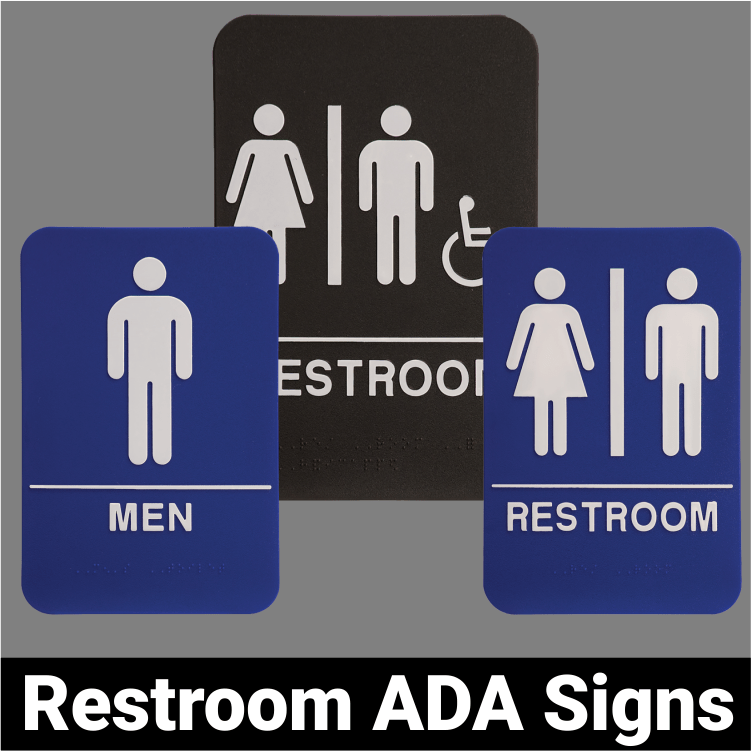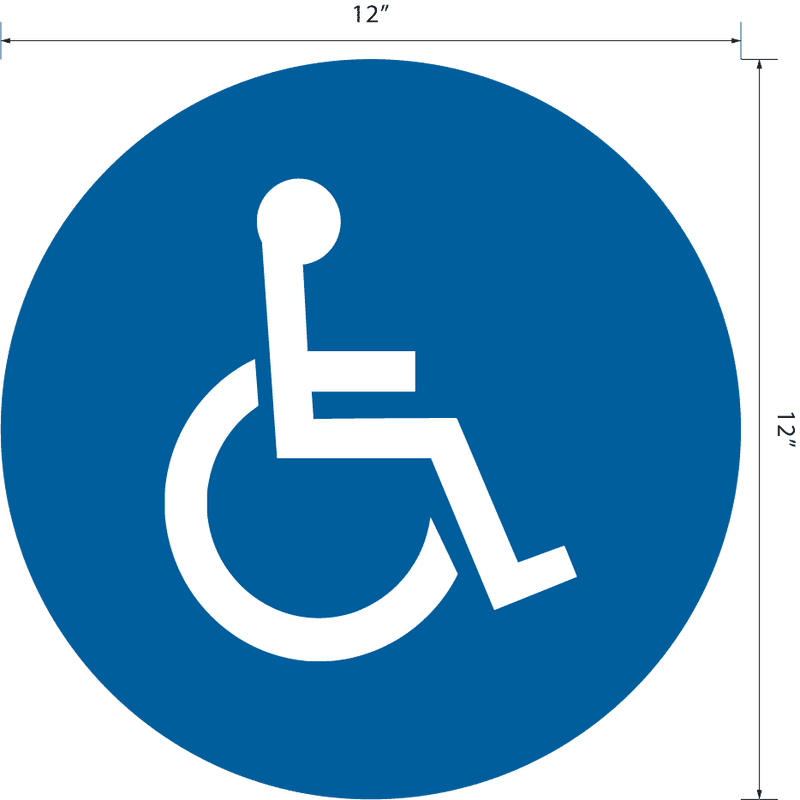The Influence of ADA Signs on Community Access
The Influence of ADA Signs on Community Access
Blog Article
Checking Out the Key Features of ADA Signs for Enhanced Accessibility
In the realm of access, ADA signs offer as quiet yet powerful allies, guaranteeing that spaces are accessible and inclusive for individuals with impairments. By incorporating Braille and tactile aspects, these indicators break barriers for the aesthetically damaged, while high-contrast color schemes and readable typefaces cater to diverse aesthetic demands.
Importance of ADA Compliance
Making sure conformity with the Americans with Disabilities Act (ADA) is crucial for cultivating inclusivity and equivalent accessibility in public areas and workplaces. The ADA, enacted in 1990, mandates that all public facilities, employers, and transportation solutions accommodate people with handicaps, ensuring they take pleasure in the same legal rights and chances as others. Conformity with ADA standards not just fulfills legal responsibilities however likewise improves a company's online reputation by showing its dedication to variety and inclusivity.
Among the key aspects of ADA compliance is the implementation of accessible signage. ADA signs are designed to make certain that people with handicaps can conveniently browse with areas and buildings. These signs should stick to details guidelines regarding dimension, typeface, shade contrast, and placement to guarantee presence and readability for all. Effectively applied ADA signs assists eliminate obstacles that individuals with specials needs typically come across, thus promoting their freedom and self-confidence (ADA Signs).
In addition, adhering to ADA regulations can minimize the danger of prospective penalties and legal effects. Organizations that fail to adhere to ADA guidelines might face charges or lawsuits, which can be both damaging and monetarily troublesome to their public photo. Thus, ADA conformity is integral to promoting a fair environment for everybody.
Braille and Tactile Elements
The unification of Braille and responsive components right into ADA signs personifies the concepts of ease of access and inclusivity. It is typically positioned beneath the corresponding text on signs to make sure that people can access the info without visual help.
Tactile elements expand past Braille and consist of increased characters and icons. These parts are created to be noticeable by touch, enabling individuals to recognize area numbers, bathrooms, departures, and other crucial locations. The ADA establishes certain guidelines regarding the dimension, spacing, and placement of these tactile components to enhance readability and guarantee consistency throughout different environments.

High-Contrast Color Design
High-contrast color design play a crucial role in enhancing the presence and readability of ADA signs for people with aesthetic disabilities. These schemes are crucial as they make best use of the difference in light reflectance in between text and history, guaranteeing that indicators are easily noticeable, also from a distance. The Americans with Disabilities Act (ADA) mandates the usage of particular shade contrasts to fit those with minimal vision, making it an important facet of compliance.
The efficiency of high-contrast colors hinges on their capacity to stand apart in numerous lights conditions, consisting of poorly lit environments and areas with glow. Generally, dark message on a light history or light text on a dark background is utilized to attain optimal contrast. Black text on a yellow or white history provides a stark visual distinction that assists in fast acknowledgment and comprehension.

Legible Fonts and Text Dimension
When taking into consideration the layout of ADA signs, the selection of legible font styles and proper message dimension can not be overemphasized. These aspects are critical for ensuring that signs are available to individuals with visual impairments. The Americans with Disabilities Act (ADA) mandates that fonts should be sans-serif and not italic, oblique, script, extremely ornamental, or of unusual form. These requirements help ensure that the message is conveniently legible from a range which the characters are distinguishable to diverse target markets.
According to ADA guidelines, the minimum text elevation ought to be 5/8 inch, and it needs to boost Our site proportionally with viewing range. Consistency in message size adds to a natural aesthetic experience, aiding people in navigating environments successfully.
Moreover, spacing in between letters and lines is integral to clarity. Ample spacing stops personalities from appearing crowded, improving readability. By sticking to these standards, developers can significantly enhance accessibility, making sure that signs offers its designated objective for all individuals, no matter their aesthetic capabilities.
Efficient Positioning Approaches
Strategic placement of ADA signs is crucial for making best use of ease of access and making sure conformity with legal standards. Appropriately located indicators guide individuals with specials needs properly, facilitating navigation in public areas. Secret factors to consider consist of height, visibility, and distance. ADA standards stipulate that signs should be mounted at a height between 48 to 60 inches from the ground to guarantee they are within the line of view for both standing and seated individuals. This typical elevation variety is vital for inclusivity, enabling wheelchair individuals and individuals of varying heights to access information effortlessly.
Additionally, indicators need to be put beside the lock side of doors to enable easy recognition prior to entry. This positioning aids individuals locate spaces and areas without blockage. In situations where there is no door, signs need to be located on the closest adjacent wall surface. Consistency in indicator placement throughout a center improves predictability, decreasing complication and enhancing overall individual experience.

Final Thought
ADA indications play a crucial function in advertising availability by integrating functions that deal with the needs of individuals with disabilities. These elements jointly cultivate a comprehensive atmosphere, highlighting the significance of ADA compliance in ensuring equivalent accessibility for all.
In the world of availability, ADA indications serve as quiet yet effective allies, guaranteeing that rooms are comprehensive and navigable for people you could try this out with impairments. The ADA, established in 1990, mandates that all public facilities, employers, and transportation solutions suit individuals with disabilities, guaranteeing they appreciate the exact same rights and possibilities as others. ADA Signs. ADA indications are developed to ensure that people with specials needs can easily browse with spaces and structures. ADA standards state that signs must be mounted at an elevation between 48 to 60 inches from the ground to guarantee they are within the line of sight for both standing and seated people.ADA indications play a vital function in promoting pop over to this web-site availability by integrating attributes that deal with the demands of individuals with handicaps
Report this page